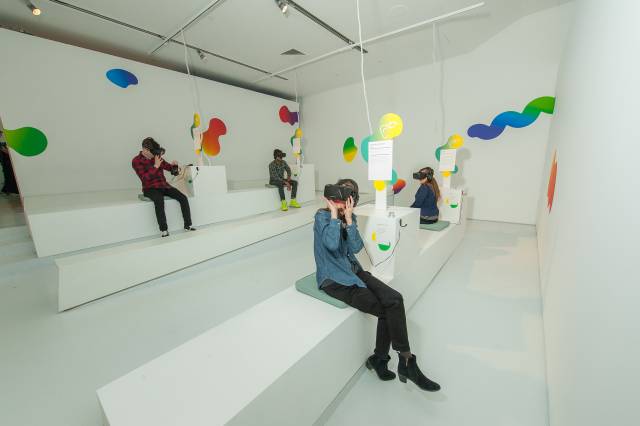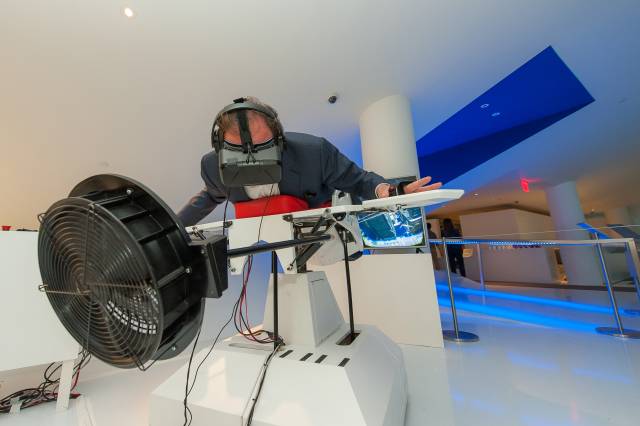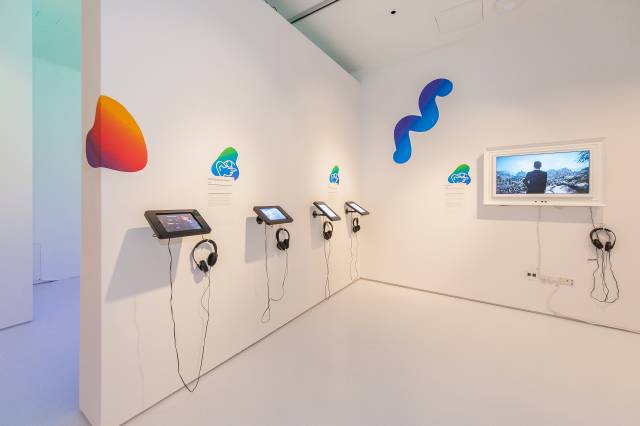

Sensory Stories currently being shown at The Museum of the Moving Image was conceived and organized by Future of StoryTelling and is essentially a peek into what the future holds for fiction narrative. Using virtual reality, interactive films and participatory installations (i.e. you can literally play with the artwork!) the exhibit takes visitors on journeys all their own, which makes the museum experience even more unique. The exhibition holds works from all over the world, some of which touch on topics like political upheavals, nature and classic childhood tales like Goldilocks and the Three Bears. The exhibit is currently on its last leg in New York, before moving on to the the Phi Centre in Montreal, where it will be on view from August 11- September 27. We had the opportunity to ask FoST member Yelena Rachitsky to share some insight on the importance of the exhibit.
Do you think that virtual reality and interactive experiences compete with or compliment traditional audiovisual narratives?
We see Virtual Reality as a new medium. VR competes with traditional narratives just like TV competes with podcasting, and games compete with theater. They each have a unique quality to them. Unlike film or theater, VR is just beginning to understand what content is meant for its medium. A lot of content being created right now is experimentation, unlike film which has had over a century to become such a powerful craft. Even so, film is continuing to evolve and expand and will continue to do so. Although some incredibly interesting work is being made for VR it's only been a couple years since people have been seriously creating content for the 360 degree world and it will probably take some more time to understand it enough for the interest of the mainstream...

With pieces like "Birdly", how likely is it that one day we'll see entire amusement parks contained in single units we can take home?
Birdly literally blew us away. It was one of the first full body experiences that felt truly transportive and sparked the potential of what could be. Although we're seeing new full body immersive VR experiences come out every couple weeks now, it will probably take a little while to perfect and make inexpensive enough for consumers to be interested enough as well as afford these types of pieces. It will also take some time for there to be enough content made for such a product that it will make enough sense to purchase one. Although we would love to own a Birdly, there's only so many times I can fly over the same couple cities. There is also a physical quality to a quality amusement park experiences that can never truly be duplicated into a digital world.

What has surprised you the most about having audiences interact with the pieces?
One of the most rewarding experiences around creating Sensory Stories has been giving the opportunity to a general audience to experience the works that have been inspiring us for years. Over the past few months we have had tens of thousands of visitors come through the exhibit, and I would guess that about 90% of them have never tried Virtual Reality or interacted much with the types of works we have on display. Mostly people have to travel to a technology conference or festival to experience and learn about these. When we see people's eyes light up after they've been immersed in a virtual world, smelled Goldilocks and the Three Bears, been tricked by a kinect sensor in Parade, or had their face mimicked by Mimicry we know we have made in impact. One of our goals is to share the information we learn with the world and inspire storytellers to use these new technologies and ideas to come up with their own innovative ideas. That's one way progress happens.
For more information about Sensory Stories click here.